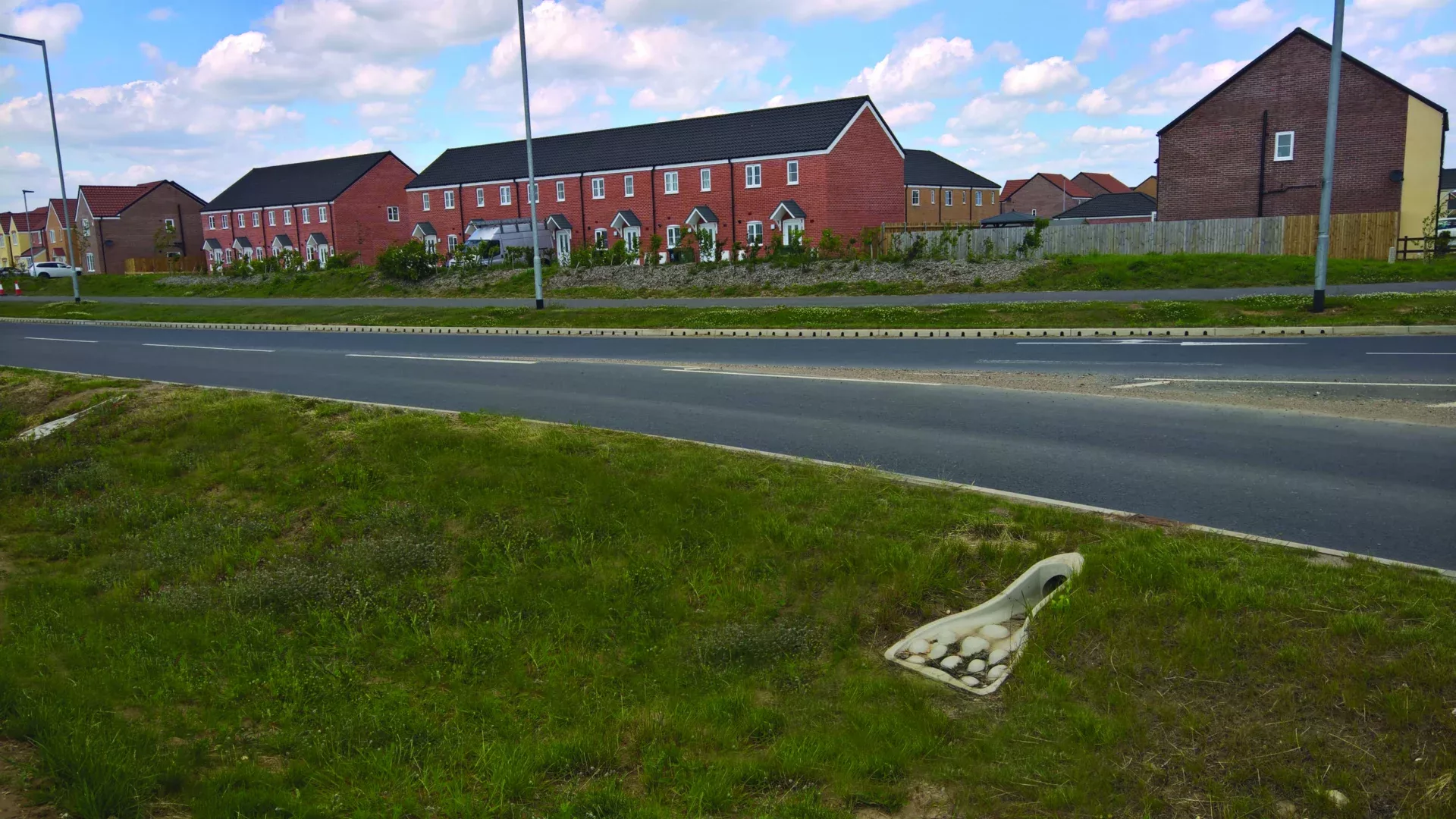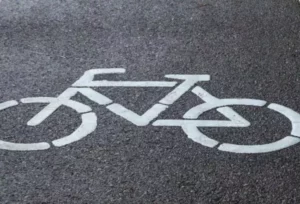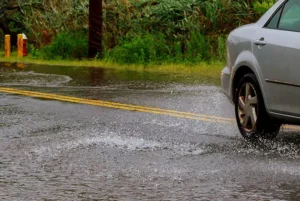When planning and designing highways networks, one of the main priorities has historically been traffic patterns and meeting the needs of road users. However, as priorities change, there is growing emphasis for the sector to ensure roads are not only safe for users, but also for the surrounding environment.
The result has been a shift in attitudes toward how highways are designed and maintained, with surface water treatment playing a more prominent role. There is a real need for the highways industry to ensure measures are in place to positively impact the quality and management of highway runoff, given how road networks contribute to water contamination. Here, Terry Wilkinson, Specialist Design & Application Engineer at ACO Water Management, explains how the highways industry can take the lead when taking better care of water.
Taking care of water
Water scarcity is likely going to be a significant challenge for future generations, and we must ensure that steps are put in place now to protect this precious resource. Too often, the news agenda is filled with sewage leaks and contamination in our rivers and water supplies. Most recently, the UK government announced that water pollution rules were changing to aid the faster development of housing, causing concern among environmental groups.
There is an uncomfortable truth that much of the UK’s water pollution comes from the road network. Surface water often holds pollutants from vehicles, including oils and tyre debris and if this water is then directly dispersed into our waterways, it will contaminate rivers, causing long-term damage. With the government looking to bypass water pollution legislation to aid the faster building of houses, it is becoming increasingly clear that industry must take the lead to protect our waterways and take care of water. The good news is that this is more than achievable. For the highways industry to take better care of water, implementing methods for effectively collecting, cleaning, storing and ultimately utilising water as a resource, rather than a threat, is critical, yet it is not something being utilised consistently.
Too often, water is channelled directly into our sewers, which is problematic for two reasons. First, the UK’s sewers are unable to cope with the amount of water and sewage put into them. According to the Surfers Against Sewage’s Water Quality report, sewage had been dumped 770,000 times into UK oceans and rivers over the course of 2020 and 2021. The second problem with using sewers is the impact it has on carbon emissions. Any water that goes into a treatment plant needs to be appropriately processed and cleaned, and as such it naturally has a high carbon footprint.
Designing better drainage
One action that highways engineers must take is to ensure systems and networks are designed with drainage front of mind. Heavy rains are becoming even more common in the UK. According to the Met Office, the period between 2009-2018 saw a 17% increase in the amount of rain from extremely wet days. If heavy rain continues as we anticipate, it will likely lead to more flooding occurrences. However, while the narrative on flooding often centres around housing, the impact it has on highways should not be understated. From impacting road surface quality to hazardous surface water causing spray, if highways are not designed with increased rainfall in mind, it could lead to unsafe roads. Also, the more often roads flood, the more pollutants and hydrocarbons will likely be washed into local ecosystems, harming wildlife and the environment.
It’s clear that changing the way we view drainage to protect our water is needed. Using sustainable drainage systems (SuDS), which mimic natural drainage, is an effective way to improve water quality and enhance both the amenity and biodiversity value of the environment.
SuDS offer a beneficial method of managing surface water at source, addressing the contaminants, and reducing the load on sewers. They are set to become more prominent in England, following the implementation of Schedule 3 to The Flood and Water Management Act 2010 announced earlier this year. Introduced to combat the impact rising urbanisation and intensified weather patterns are having on drainage systems, the implementation of Schedule 3 in England was announced to decrease the volume of water flowing into sewers and storm overflow discharges. It remains to be seen what the exact extent of the scope and exemptions of Schedule 3 in England may be for highways, but there really should be an increased expectation for more SuDS to be introduced in future highways projects in England, which will in turn have a positive impact on our water.
Introducing SuDS to your project
To introduce SuDS to a highways project, there needs to be an understanding of the fundamental principles. SuDS aim to control surface rainfall run-off by controlling the rate and volume of water from the site that take advantage of the way water naturally moves, to relieve the pressure on sewerage systems. Used correctly, SuDS can help deliver greener infrastructure, however, research from ACO shows that there are barriers impacting progress. Indeed, in a survey of 100 highways and infrastructure engineers undertaken just before the announcement of Schedule 3’s upcoming implementation, 99% of respondents faced at least one barrier to implementing SuDS schemes. Clearly, mindsets need to change.
Implementing SuDS into a project is more accessible than ever. There are four pillars to the SuDS philosophy: water quality, water quantity, amenity and biodiversity. ACO has developed its own approach to help developers and contractors adopt SuDS into their projects – Collect, Clean, Hold and Reuse. Here, ACO embraces the entire surface water management cycle to ensure that rain collected from the ground re-enters the natural water environment safely.
SuDS components can be applied to clean collected water to ensure it reaches a standard that will protect water sources and biodiversity. Filter strips, filter drains, swales, bioretention systems, detention basins, trees and proprietary treatment systems can all be installed to help reduce the risk of pollutants entering water courses and groundwater.
By adhering to SuDS principles, the highways industry can facilitate and sustain better environments for both people and nature. The SuDS Manual (CIRIA C753) provides comprehensive guidance for planning, design, construction, operation and maintenance of water management systems. The Simple Index Approach (SIA) also helps determine whether the proposed SuDS will provide adequate mitigation for the pollution hazard of a development. Interestingly, ACO’s aforementioned survey found that only 44% of respondents fully understood the SIA.
With a gap in knowledge prevalent, it’s becoming increasingly clear that manufacturers must step up and ensure proprietary SuDS solutions are not only readily available but are also installed correctly. So what options are available?
For highways projects, separators that manage the interception of sediments, hydrocarbons and other pollutants at source are beneficial in the process of cleansing water. To ensure the right solutions are used, advice should be sought from water management specialists as different separator types will treat specific pollutants to differing degrees. The correct specification is key to helping prevent pollution from entering soil and watercourses.
Silt removal upstream using an appropriate separation step will help to minimise the majority of sediment build-up downstream, particularly in attenuation tanks and systems which hold the water until it can be released at a sustainable rate, or infiltration systems. This reduces how often the attenuation/infiltration must be cleaned and maintained, as less silt flows down the system.
The next step highways projects must consider when implementing drainage systems is how water is attenuated and released once cleaned. Controlling water quantity release is an important aspect of SuDS which can help mitigate flooding so this step mustn’t be overlooked. Introducing infiltration where ground conditions permit, or through a flow control that manages the flow rate leaving the drainage system, can ensure that a safety-first and best-practice approach is taken.
Making changes
The need for the UK to care for its water cannot be overstated. All of us have a responsibility to care for water – whether at home in our gardens or on a construction site. The highways industry is no different, and introducing SuDS principles can go a long way in protecting our water. If changes do not happen, then we can expect existing headlines around water contamination to persist. With water scarcity set to increase, we have a collective responsibility to ensure this doesn’t occur, yet taking action now, both in our current and future projects, can help mitigate the many issues we are currently facing.
ACO has a wealth of experience supporting the highways industry implement a drainage system them not only protects road users, but also the wider environment. For more information, visit www.aco.co.uk.






















